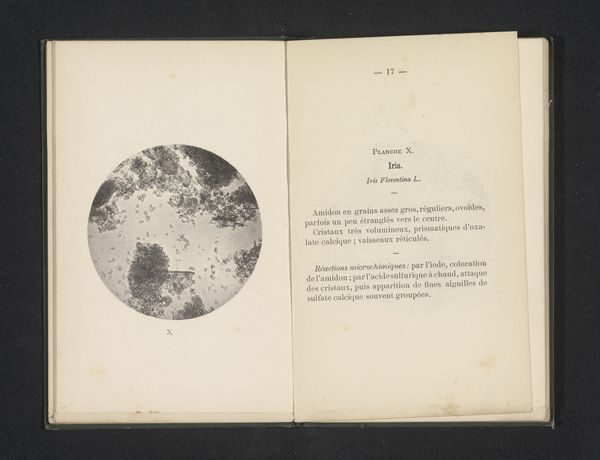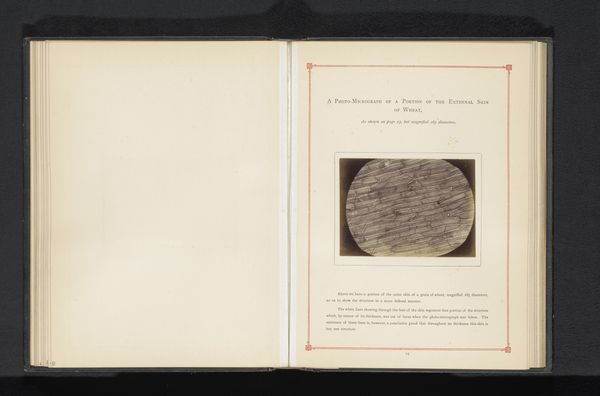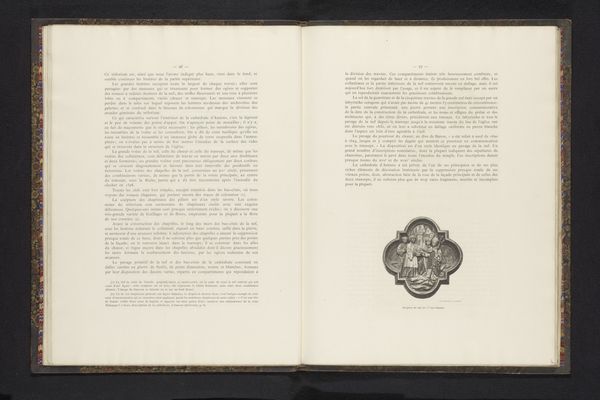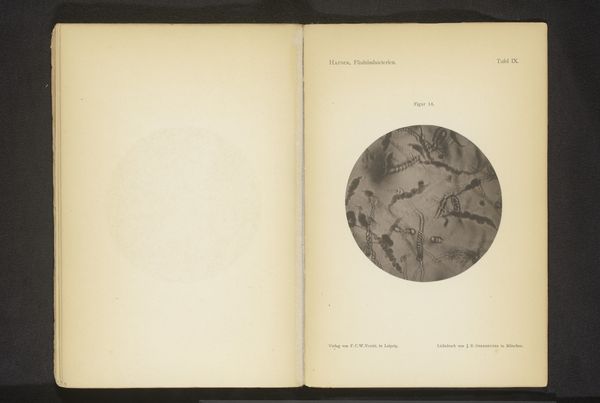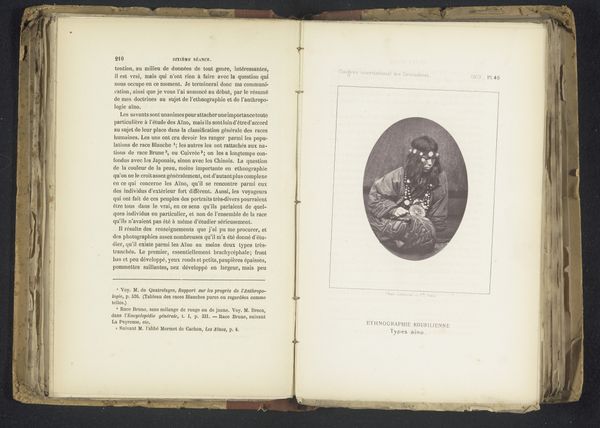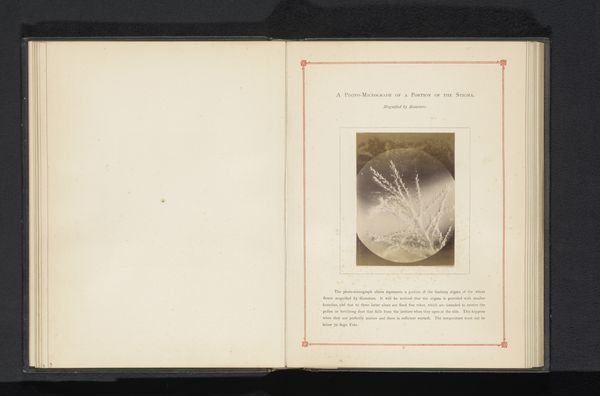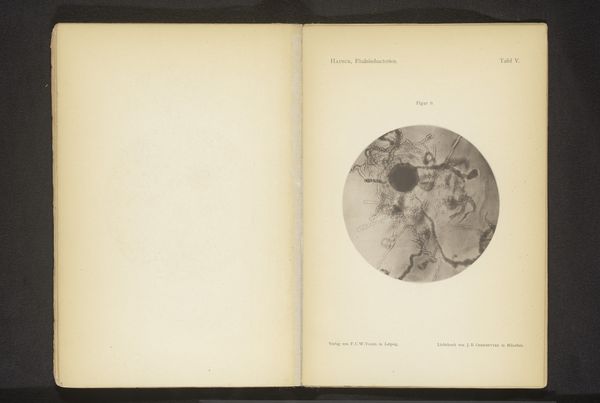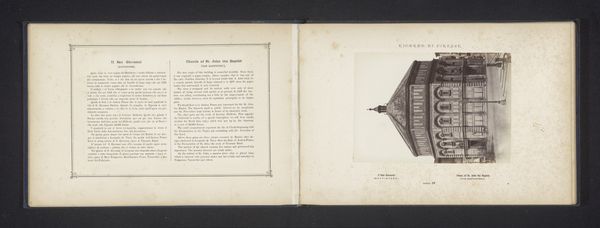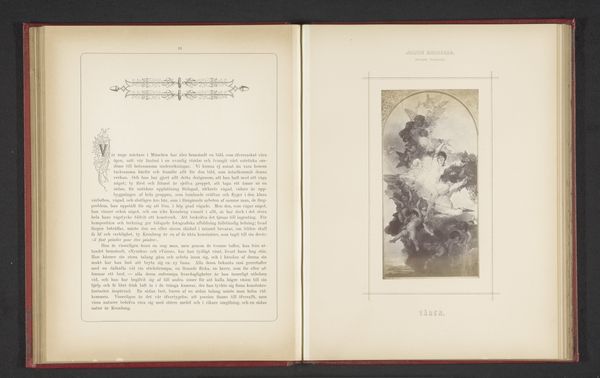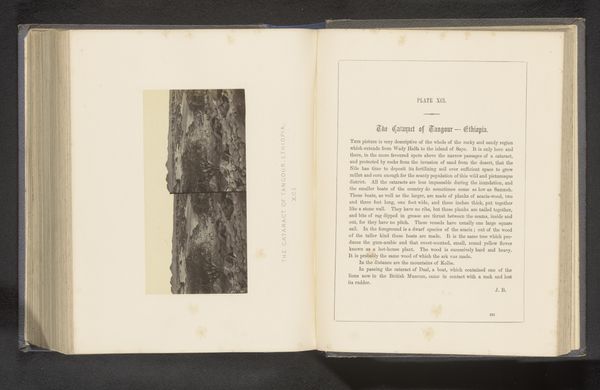
print, paper, photography
#
aged paper
#
homemade paper
#
paper non-digital material
#
paperlike
# print
#
personal journal design
#
paper texture
#
paper
#
photography
#
plant
#
folded paper
#
letter paper
#
paper medium
#
design on paper
Dimensions: height 74 mm, width 103 mm
Copyright: Rijks Museum: Open Domain
Editor: We’re looking at “Microscoopopname van een kiem van een tarweplant,” which translates to "Microscopic Image of a Wheat Plant Germ," dating from before 1892. It's a photographic print on paper by Robert W. Dunham displayed as part of a book. The visual symmetry is compelling. The high contrast draws my eye toward the darker portion, but then the lighter textures on the opposite side create visual tension. What stands out to you in terms of the composition? Curator: Initially, it is paramount to acknowledge the careful selection of visual elements contained within the frame. The stark contrast between the illuminated and shadowed regions bifurcates the composition, producing a visual equilibrium. The textured granularity exhibited in both domains creates intricate micro-narratives which, when combined, serve as an invitation for an analytical observation of the physical elements present within the picture plane. Consider, too, the placement of the focal object against a neutral backdrop; what meaning does it seem to suggest in relation to the content itself? Editor: That’s a good question. The neutral backdrop really isolates the germ, almost emphasizing its self-contained nature. It also brings a sense of clarity to what could easily become a muddled image. Are there any symbolic associations to this that you discern? Curator: Symbolism emerges not from conventional representation, but instead via formal relations. The opposition between dark and light embodies dichotomies - life and death, presence and absence. This tension infuses the botanical subject with larger metaphorical implication. Furthermore, one might interpret the print's physical materiality, the aged paper itself, as evidence that accentuates the cyclical process inherent to both photographic documentation as well as to organic growth. Editor: That's a compelling connection I hadn't considered! Thinking about the paper's age as part of the artwork's message is an interesting perspective on time and cycles. Curator: Precisely. Attending to such formal relations fosters innovative interpretation that enhances our engagement beyond conventional symbolic interpretation.
Comments
No comments
Be the first to comment and join the conversation on the ultimate creative platform.
